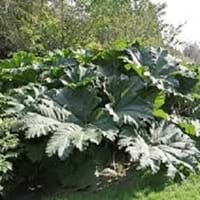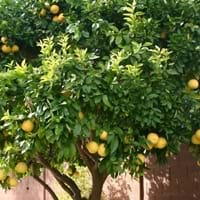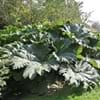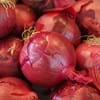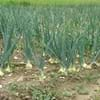Life Span
Perennial
Perennial
Origin
Hybrid origin, Eastern Asia, India, Nepal, China
South Asia, Southeast Asia
Types
Victoria Rhubarb
Colorado Red Rhubarb
Turkish Rhubarb
Not Available
Number of Varieties
Not Available
Habitat
gardens, Grassland, Humid climates, Tropical regions, Urban areas
Mediterranean region
USDA Hardiness Zone
3-7
8-10
AHS Heat Zone
8-5
Not Available
Sunset Zone
2a, 2b, 3a, 3b, 4, 5, 6, 7, 14, 15, 16, 17
Not Available
Habit
Clump-Forming
Spreading
Flower Color Modifier
Not Available
Bicolor
Fruit Color
Not Available
Green, Lemon yellow, Yellow
Leaf Color in Spring
Green
Green
Leaf Color in Summer
Green
Green
Leaf Color in Fall
Green
Dark Green
Leaf Color in Winter
Light Green
Dark Green
Leaf Shape
Compound
Ovate
Plant Season
Summer
All year
Sunlight
Full Sun, Partial Sun
Full Sun
Type of Soil
Clay, Loam
Rich
The pH of Soil
Acidic, Neutral
Acidic
Soil Drainage
Well drained
Well drained
Bloom Time
Summer, Late Summer
Spring, Summer
Tolerances
Drought
Full Sun
Where to Plant?
Ground
Container, Ground
How to Plant?
Stem Planting
Divison, Seedlings
Plant Maintenance
Medium
High
Watering Requirements
Do Not over Water, Requires regular watering, Use Mulches to help prevent water loss during hot and windy weather, Water Deeply
Reduce watering once fruit are growing, Water daily during growing season
In Summer
Lots of watering
Lots of watering
In Spring
Moderate
Moderate
In Winter
Average Water
Average Water
Soil pH
Acidic, Neutral
Acidic
Soil Type
Clay, Loam
Rich
Soil Drainage Capacity
Well drained
Well drained
Sun Exposure
Full Sun, Partial Sun
Full Sun
Pruning
Remove damaged leaves, Remove dead branches, Remove dead leaves
Prune to control growth, Remove dead branches
Fertilizers
All-Purpose Liquid Fertilizer
Fertilize in early to mid-summer, for fruiting plants, use high phosphorous content fertilizer
Pests and Diseases
Red blotch
Aphids, Citrus foot rot, Citrus gummosis, Citrus leaf miner, Red blotch
Plant Tolerance
Drought
Full Sun
Flower Petal Number
Not Available
Double, Semi-Double
Foliage Texture
Bold
Coarse
Foliage Sheen
Matte
Glossy
Attracts
Not Available
Ants, Birds
Allergy
Skin irritation
Anaphylaxis, Cough, Nausea, Rhinitis, Stomach pain, Swelling, Urticaria, Vomiting, wheezing
Aesthetic Uses
Not Used For Aesthetic Purpose
Farmland, Showy Purposes
Beauty Benefits
Not Available
Acne, Good for skin, Good for the Scalp, Improve skin tone, Moisturizing, Strong, beautiful hair
Environmental Uses
Air purification
Food for animals, Very little waste
Medicinal Uses
Not Available
anti-cancer, constipation, Digestive, Gastrointestinal disorders, Gout, Immunity, Jaundice, Respiratory Disorders, Rheumatoid arthritis, scurvy, Ulcers, Urinary problems, Weight loss
Part of Plant Used
Whole plant
Fruits
Other Uses
Culinary use, Used as Ornamental plant
Cosmetics, Used as a flavouring in food, Used As Food, Used for its medicinal properties
Used As Indoor Plant
No
No
Used As Outdoor Plant
Yes
Yes
Garden Design
Edible, Herb / Vegetable, Mixed Border
Edible, Fruit Tree, Tropical
Botanical Name
RHEUM x hybridum
Citrus limetta
Common Name
Hybrid Garden Rhubarb, Rhubarb
sweet lime, sweet lemon, sweet limetta
In Hindi
एक प्रकार का फल
मौसम्बी
In German
Rhabarber
süße Limone
In French
Rhubarbe
Citrus limetta
In Spanish
Ruibarbo
limetta dulce, limón dulce mediterráneo, limón dulce y lima dulce
In Greek
Ραβέντι
γλυκό ασβέστη
In Portuguese
Ruibarbo
doce de limão
In Polish
Rabarbar
słodkie limonki
In Latin
RHEUM
dulcis ad cinerem
Phylum
Tracheophyta
Magnoliophyta
Class
Not Available
Magnoliopsida
Order
Caryophyllales
Sapindales
Family
Polygonaceae
Rutaceae
Clade
Angiosperms, Core eudicots, Eudicots
Not Available
Tribe
Not Available
Citreae
Subfamily
Not Available
Citroideae
Importance of Rhubarb and Sweet Lime
Want to have the most appropriate plant for your garden? You might want to know the importance of Rhubarb and Sweet Lime. Basically, these two plants vary in many aspects. Compare Rhubarb and Sweet Lime as they differ in many characteristics such as their life, care, benefits, facts, etc. Every gardener must at least have the slightest clue about the plants he wants to plant in his garden. Compare their benefits, which differ in many ways like facts and uses. The medicinal use of Rhubarb is Not Available whereas of Sweet Lime is anti-cancer, constipation, Digestive, Gastrointestinal disorders, Gout, Immunity, Jaundice, Respiratory Disorders, Rheumatoid arthritis, scurvy, Ulcers, Urinary problems and Weight loss. Rhubarb has beauty benefits as follows: Not Available while Sweet Lime has beauty benefits as follows: Not Available.
Compare Facts of Rhubarb vs Sweet Lime
How to choose the best garden plant for your garden depending upon its facts? Here garden plant comparison will help you to solve this query. Compare the facts of Rhubarb vs Sweet Lime and know which one to choose. As garden plants have benefits and other uses, allergy is also a major drawback of plants for some people. Allergic reactions of Rhubarb are Skin irritation whereas of Sweet Lime have Anaphylaxis, Cough, Nausea, Rhinitis, Stomach pain, Swelling, Urticaria, Vomiting and wheezing respectively. Having a fruit bearing plant in your garden can be a plus point of your garden. Rhubarb has no showy fruits and Sweet Lime has showy fruits. Also Rhubarb is not flowering and Sweet Lime is flowering. You can compare Rhubarb and Sweet Lime facts and facts of other plants too.
